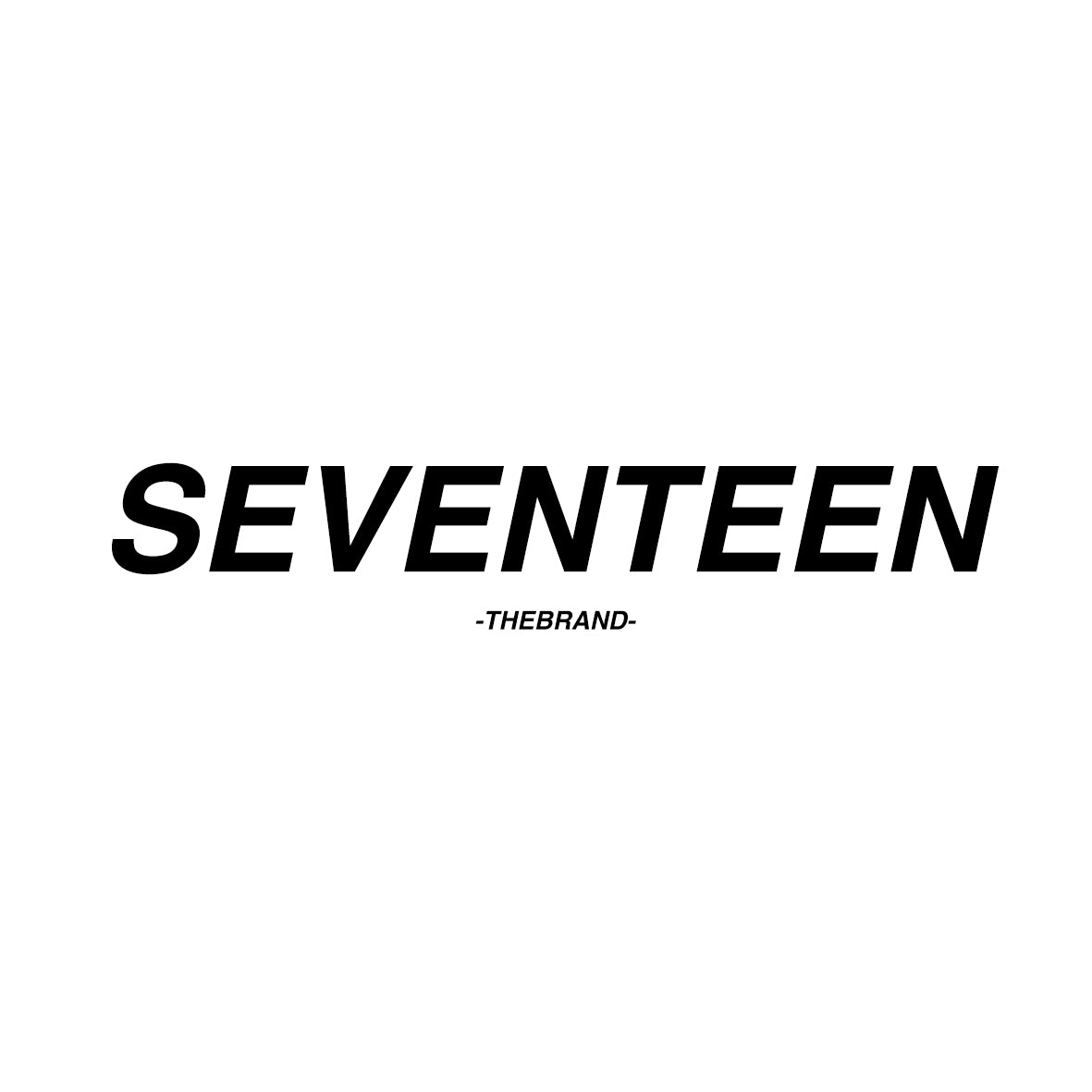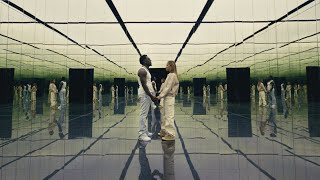
So, it Turns Out That BE@RBRICK Might Be a Good Investment
Back in 2018, Yuta Hosokawa's READYMADE, BAPE, and MediCom Toy teamed up again for a new series of collaborative Bearbricks. Per usual, the drop featured 100% and 400% models with printed co-branding from the Japanese labels. However, the true star of the show was the 1000% model. A streetwear historian's wet dream, the 700mm Bearbrick came dressed in an iconic camo BAPE Shark Hoodie as well as READYMADE's signature vintage military fabric. Naturally, the swagged-out bear would inevitably drop at select retailers, selling for about ¥300,000 or $2,700.
Fast forward to the present day. If you were to try to get your hands on the same 1000% Bearbrick you probably wouldn't — unless you have $100,000 burning a hole in your pocket. Currently, the plastic potbelly bear has a market price of $121,000.
Now, I am no investment expert, but if I were to compare that 4381.5% increase in value to the S&P 500's average annualized return of 10.67%, I'd say that this Bearbrick had a pretty damn impressive return on investment. And, this is not just a one-off case.
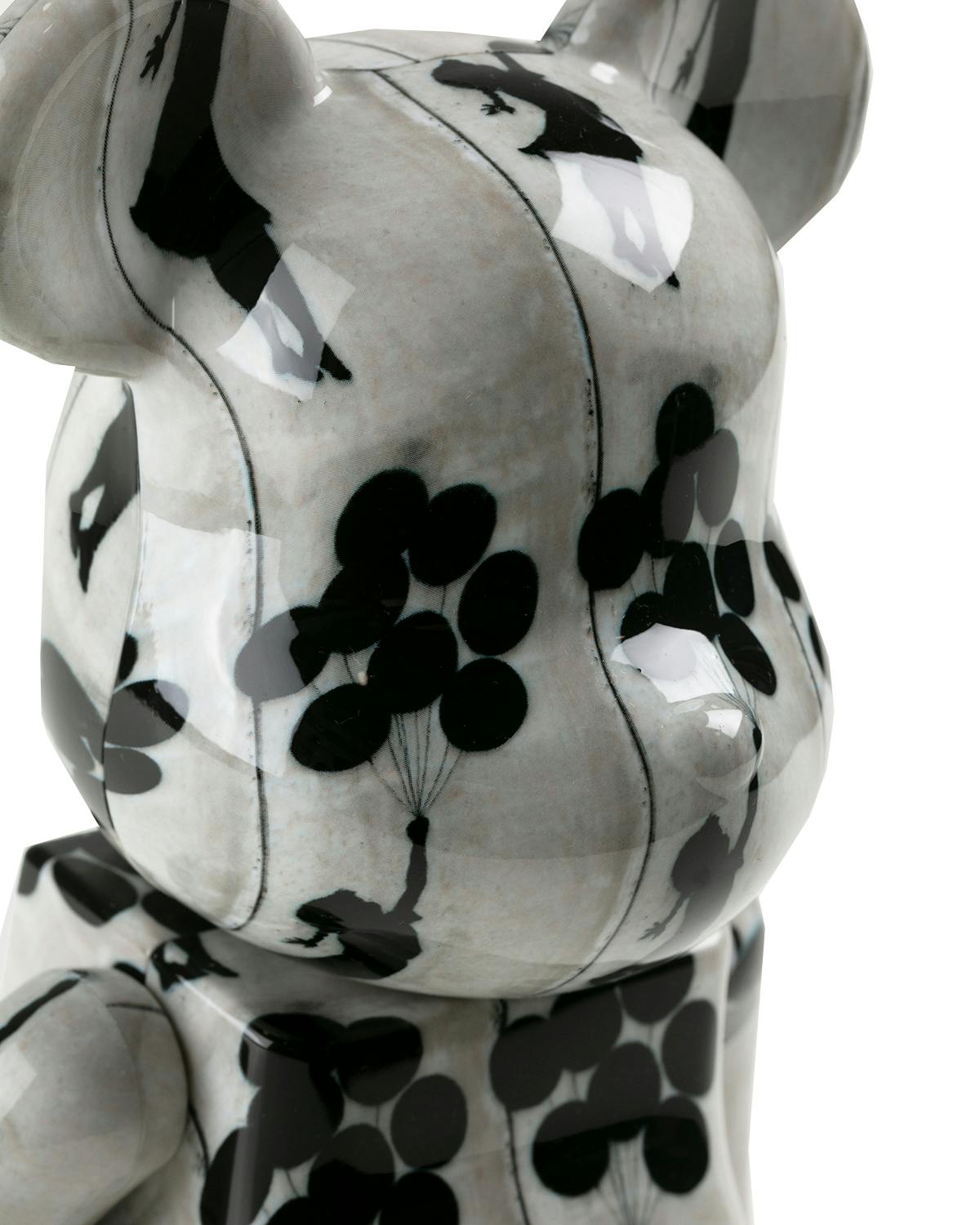
If you skim through Bearbrick's (also spelled BE@RBRICK) storied history of collaborations, you'll find a wide array of bears reselling anywhere from 7% to 1800% above price — with a majority of the rarer drops falling on the higher end of this spectrum.
But, before you start doing the Birdman hand rub, let's examine why people continue to dish out so much for this plastic humanoid bear. No, you are not going to get rich flipping bears. Yet, if you are a fan of Bearbrick and have been looking for another reason to cop the toy for your apartment, "It's an appreciating asset" may turn out to be a solid excuse.
Clout and collaborations keep driving up the price.
Why is Bearbrick so expensive, and why do so many resell for so much? Three words. Hyped limited collaborations. Early in its history, at the turn of the millennia, MediCom Toy's Kubrick bear quickly partnered with individuals, organizations, fashion labels, etc. The toy's lore is extensive and includes partnerships with KAWS, Baccarat, Nike, Andy Yun Minjun, Jean Michel Basquiat, mastermind Japan, Hermes, Pixar, Tom & Jerry, Daft Punk, CLOT, Takashi Murakami, and the list goes on.
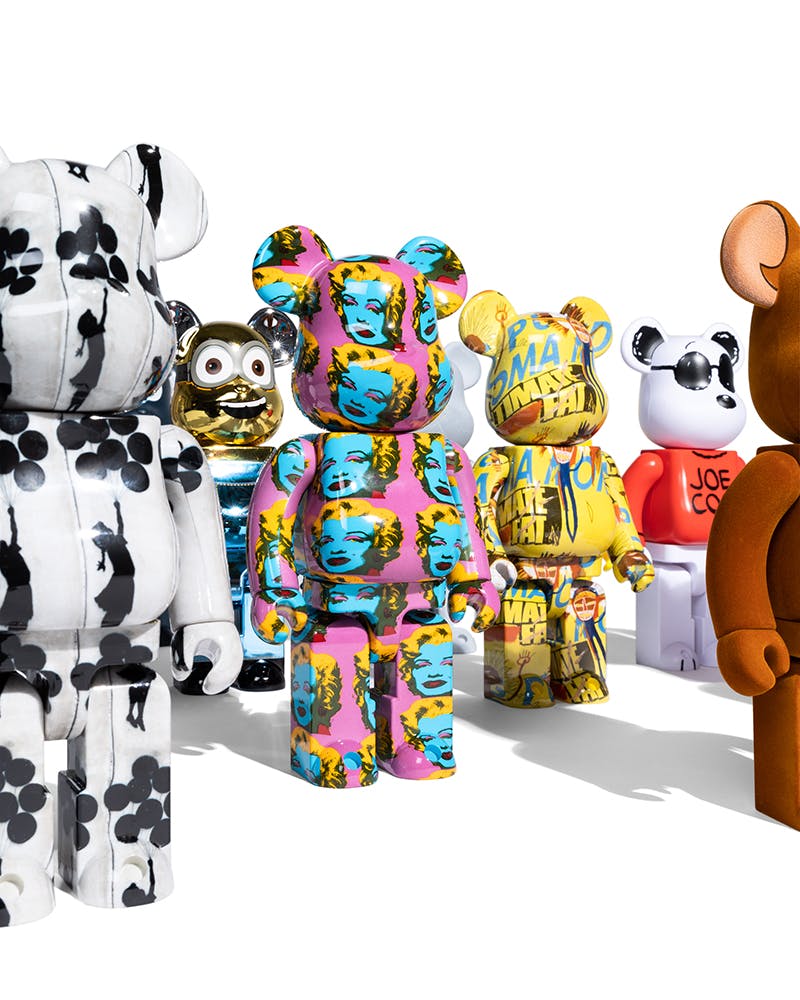
Expectedly, these collaborations have attracted fans of the partnering brands. Rich kids, the streetwear conscious, seasoned art collectors, and significant personalities such as Grace Coddington, JJ Lin, Pharrell Williams, Nigo, Dj Khaled, and Ben Baller have all been seen flexing with their Bearbrick collections on the gram. The bear has become another way to establish clout - equally as impressive as a closet filled with rare sneakers, a hallway plastered with 1 of 1 art pieces, or a room shelf packed with Birkins. This prestigious fan base has helped solidify the hype around the bear.
All BE@RBRICKs are limited edition.
MediCom Bearbricks are hard to get a hold of at retail for two reasons — limited quantity and limited retailers. All Bearbricks are limited edition, rarely set for rerelease. Major drops only come twice a year, Summer & Winter, with a few smaller general and special occasion releases occurring throughout the year. Then there's the actual rarity.
Bearbricks themselves are categorized into types that dictate the overall rarity of the Bearbrick.
- Basic - These are some of the most common figures found throughout collections. "Basic" bears can consist of multiple different bears with each bearing an individual letter that inevitably spells out Bearbick. Similar to "Standard Type" below, these are relatively easy to get.
- Standard - The most common type of model. Most Bearbricks here follow specific recurring themes designated by MediCom like Animal, Science Fiction, Hero, National flags, etc.
- Artist - The second-rarest type of bears, these Bearbricks tend to have the biggest hype around them; hence they have some of the steepest prices. Collaborations with artists like Daniel Arsham had average price premiums of 1,100% in the secondary market. These bears tend to sell out instantly.
- Secret - These Bearbricks make up less than 1% of all the current Bearbricks and are usually unannounced designs or collabs, making some of the rarest of them all.
As for retailers, MediCom keeps the selection of shops select if you want to buy something at retail. However, if you want to buy directly from Bearbrick, you can't, as the Japanese brand does not accept purchase orders from people outside of the country. Thankfully you can buy a Bearbrick at our Highsnobiety shop.
This overall elusiveness has kept demand and prices for the bear high over the years. Though a majority of the Bearbricks are worth a look, as an investment, putting your money in hyped collaborative pieces, especially among artists, will give you the biggest reward. Mika Ninagawa Goldfish, Hebru Brantley, and KAWS Bearbricks have seen price premiums of 90%, 549%, and 11,455%, respectively. And, this makes sense. In many cases, it's like you are buying from the artist. You can see a similar trend with hyped brands like Chanel or READYMADE. If you are going to jump into the Bearbrick world, start with these, and you'll most likely have a good time.
Size matters
In the world of Bearbricks, size matters. Don't let anyone tell you differently. For the uninitiated, most Bearbricks fall into one of these different sizes: 50% (35 mm), 70% (50 mm), 100% (70 mm), 200% (145 mm), 400% (280 mm) and 1000% (700 mm).
Collectors tend to prefer the desk-friendly 400% models and the statue sized 1000%, and prices reflect this. These upper-tier models retail for much more than their smaller counterparts. A Bearbrick like Andy Warhol x Jean-Michel Basquiat 1000% can sell 4-5 times more than its 100% version in the secondary market. Though it's not always 1 to 1, in the end, 400% and 1000% Bearbricks have the highest chance of appreciating over time.
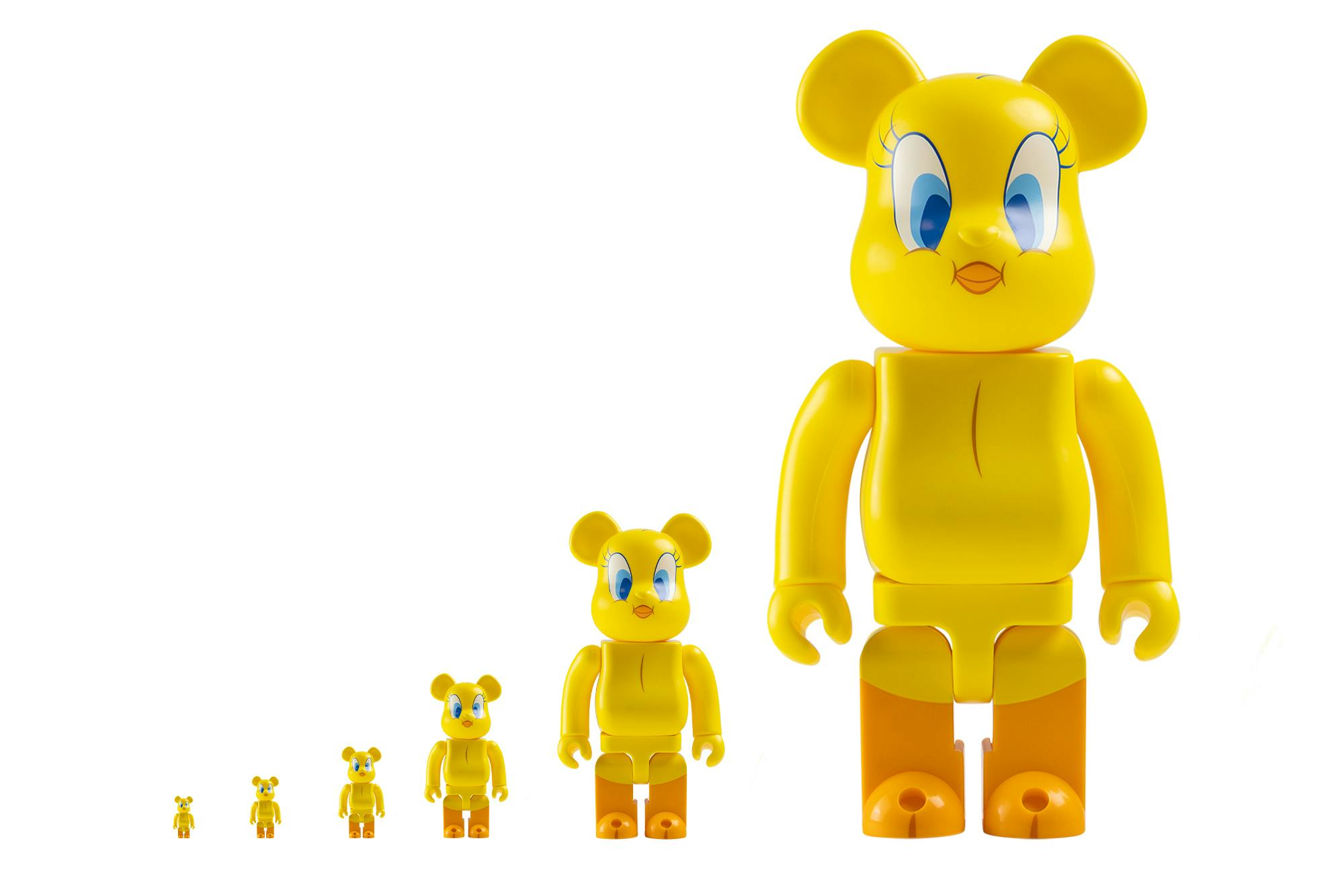
How much is BE@RBRICKs worth?
But again, why are people willing to pay these outrageous prices? Bearbricks themselves are not really made from some special material. Though MediCom Toy has introduced different materials like metal, wood, and even crystal, most bears are made of plastic. Nonetheless, aside from the limited quantity or big names showing off their bears, there is something else that makes Bearbrick special.
Bearbrick is a direct reflection and extension of culture — something that is more tangible and more likely to last than a pair of 20-year-old sneakers or a decade-old screen-printed tee. They are blank canvases that some of the culture's most exciting artists and brands have gone on to use to tell their stories, connect to fans, or extend their universes. MediCom's toy effectively blurs the line between art, streetwear, and nostalgia in a way that is compelling.
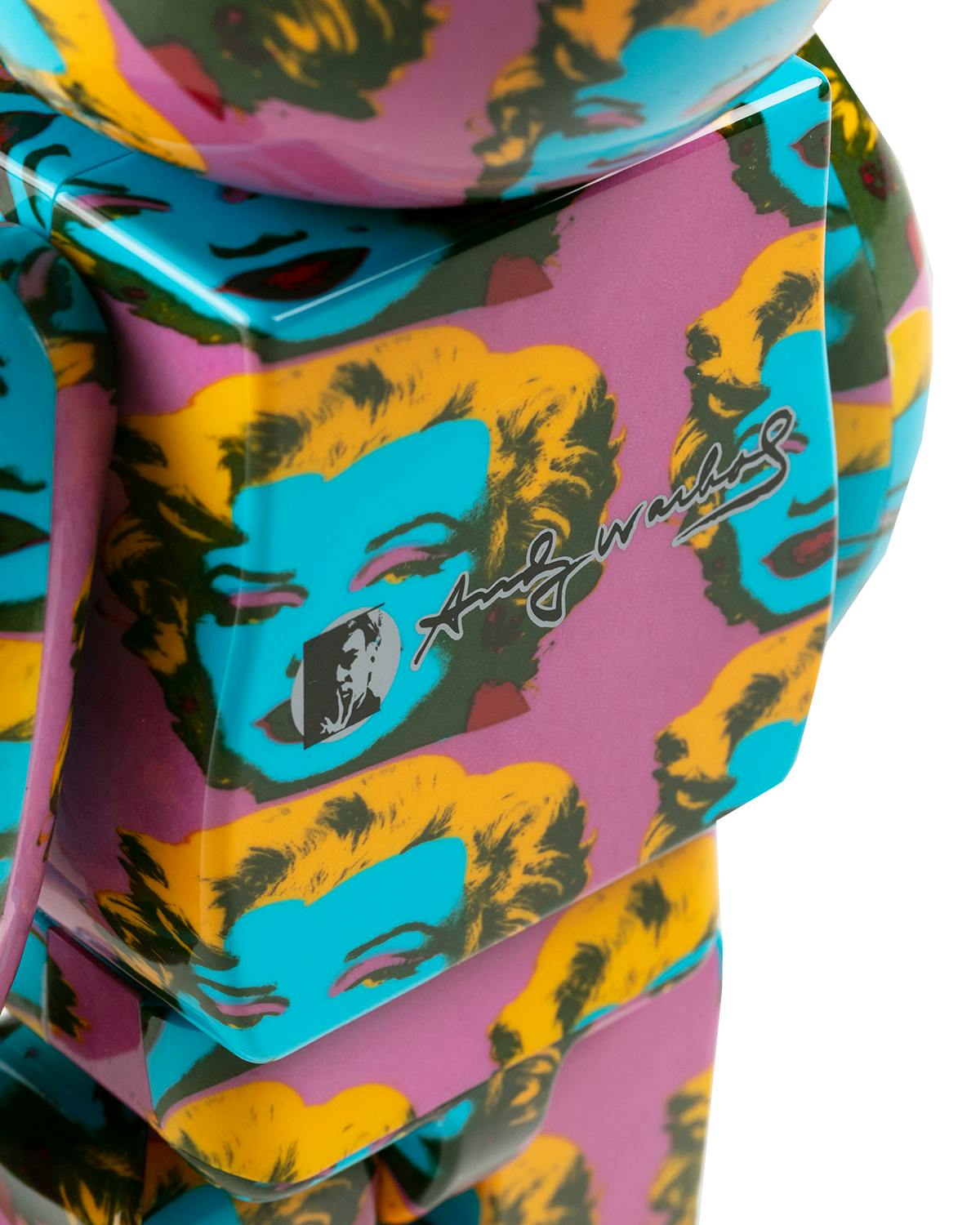
Are BE@RBRICKs a good investment?
So, are Bearbricks a good investment? Yes, no, or maybe who cares? If you want to start throwing money at toy collectibles, it could be argued that Bearbrick is a good place to start. In the same spirit as Star Wars, Transformers, or Barbie figurines, Bearbrick has appreciated in value on the secondary market, becoming a staple on bidding sites and even world-renowned auction houses, like Christie's.
Even more so, the age of collectibles is in full swing, in which a mixture of social media and its influencers, Cryptos, NFTs, FOMO (Fear of Missing Out), and a strong desire for nostalgia have created the perfect storm for the continued demand for memorabilia like Bearbrick. That craze will not be going away anytime soon either. The annual global collectible market was estimated to be worth $372 billion in 2020 and is expected to reach $522 billion by 2028.
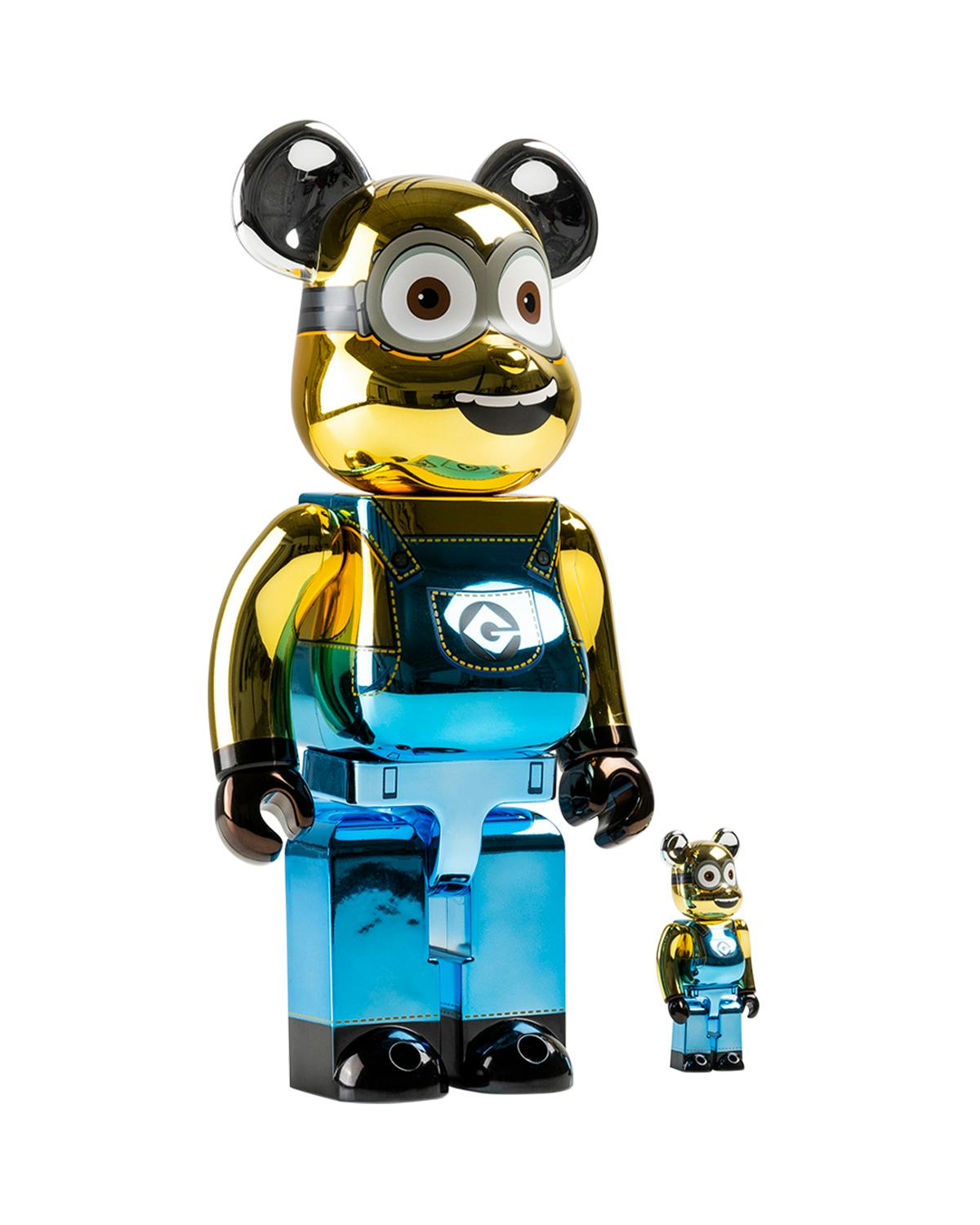
Nonetheless, the reality is that long-time fans of Bearbrick could probably care less. Core fans see them as a source of joy and inspiration, toys that celebrate pop culture. Growing up collecting Pokemon cards, all I cared about was getting my favorite Kanto region starter from the Pokemon TV show, not how much I could sell my Charizard for. Bearbrick is often another access point to a collector's favorite musician, designer, and label.
But, yes, as a casual observer, those resale numbers are hard to ignore. If you are looking to buy a few Bearbricks, there are worse ways to spend your money.

